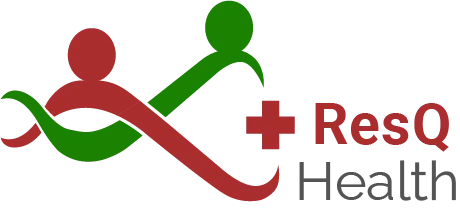
Top Class Management Strategies to Streamline Your Operations
Running a smooth training operation is like mastering a skillful juggling act. Managing multiple classes, ensuring clear communication among instructors and students, and achieving educational goals can make all the difference in the success of your training business. Whether you're a seasoned trainer or new to the field, fine-tuning your class management strategies can lead to more efficient operations and better learning outcomes. Effective management means that instructors can focus more on teaching, while students benefit from organized classes that enhance their learning experience. It's a win-win situation for everyone involved.
In New London, NH, where the scenic backdrop can sometimes be distracting, having a streamlined approach to class management is crucial. As we look ahead to the warmer months of 2025, a well-organized training schedule can ensure your classes are as refreshing as a spring breeze, keeping both instructors and students motivated and focused. Streamlined operations are not just about keeping things running smoothly; they can inspire creativity and innovation in the way classes are taught, making the educational experience more enriching for everyone.
Setting Clear Objectives for Each Class
Establishing clear objectives is like drawing up a road map for your class. It helps instructors know what path to follow and offers students a clear direction and purpose for their learning journey. So, how can you effectively set and communicate these objectives?
Define Precise Goals: Start by identifying what you want your students to learn by the end of the session. This might include specific skills, knowledge, or competencies you aim to impart.
Make Objectives Measurable: Just like checking off items on a to-do list, make sure your goals can be measured. Whether it's through assessments, projects, or direct feedback, measurable objectives help you gauge if your class is heading in the right direction.
Communicate Clearly: Ensure that both students and instructors understand the objectives from the get-go. This could be through a syllabus, an introductory session, or a simple handout. The clearer the message, the easier it is for everyone to stay on track.
Think of setting objectives as planting seeds. Clear goals help nurture students' growth, ultimately leading to a successful harvest where knowledge and skills flourish. With objectives well-defined and communicated, the class becomes a focused and productive environment, making it easier to achieve desired outcomes.
Effective Use of Class Management Software
In today's tech-savvy world, class management software acts as a powerful tool for keeping training sessions organized and efficient. These digital tools simplify many tasks that once required manual intervention, such as scheduling and attendance tracking.
Scheduling Made Easy: Online platforms allow instructors to set up class times with minimal fuss. Students can sign up without hassle, and any changes can be communicated promptly.
Automated Reminders: Notifications keep everyone on the same page. With automated reminders, instructors and students are always aware of upcoming sessions, reducing the chance of missed classes or double bookings.
Feedback Collection: Gathering feedback is no longer a tedious task. Many software options include features that enable quick and easy collection of feedback from students, helping instructors continuously improve the learning experience.
By integrating these tools into your class management strategy, you are not just keeping things organized—you are enhancing your ability to provide a memorable and efficient learning experience. Class management software lightens the administrative load, allowing more focus on what truly matters: teaching and learning.
Enhancing Communication with Students and Instructors
Communicating clearly is like providing the glue that holds the training experience together. Both students and instructors rely on effective communication for smooth operations and successful outcomes. Inconsistent or unclear messaging can lead to confusion and missed opportunities for learning. To avoid this, establishing reliable communication channels is essential.
Here are a few ways to enhance communication:
Regular Updates: Send out weekly emails or newsletters that outline what's coming up. This can include topics to be covered, any schedule changes, or reminders about assignments. It keeps everyone informed and reduces last-minute surprises.
Dedicated Messaging Apps: Consider using apps like Slack or Microsoft Teams to maintain open lines of communication. These platforms offer a convenient way to share quick updates and encourage dialogue, allowing both students and instructors to engage in real-time conversations.
Feedback Sessions: Regular check-ins can serve as a platform for both parties to express concerns or ideas. These sessions can be scheduled at the end of each module or term to ensure that everyone is aligned.
By improving the way communication flows, instructors and students can focus more on the content and less on administrative details, fostering a more conducive learning environment.
Continuous Improvement Through Feedback
Feedback is like a mirror reflecting the effectiveness of a training program. Regular and systematic collection of feedback from both students and instructors can provide valuable insights into what's working well and what needs tweaking. It's a vital tool for growth and improvement.
Here's how to make the most of feedback:
Solicit Regular Input: Use surveys or online polls to gather feedback after each class or training session. This ensures that you're consistently gathering data to assess performance.
Actionable Insights: Analyze the feedback to identify patterns or recurring themes. Look for areas that frequently receive praise as well as those that may need adjustment.
Implement Changes: Based on the insights, make the necessary adjustments to your classes. This could involve altering the teaching approach, improving resource materials, or even adjusting class times to better suit participants.
When feedback is treated as an ongoing process, it empowers instructors to refine their skills and students to gain a more tailored learning experience. Continually seeking input helps create a dynamic and responsive educational setting.
The Value of Streamlined Class Management
Embracing these strategies can pave the way for more efficient class management and richer learning experiences. By setting clear objectives, leveraging digital tools, fostering solid communication, and embracing feedback, training programs can operate more fluidly and effectively in New London, NH.
The key lies in adopting a comprehensive approach that incorporates all these aspects into a cohesive management strategy. While it might take some time to implement these changes, the rewards in terms of improved operations and satisfied participants are well worth the effort. Effective class management isn't just about keeping things on track; it's about enhancing the educational experience for everyone involved. With these strategies in place, you can look forward to a brighter, more organized future for your training business.
Ready to take your training operations to the next level? Discover how ResQ Health can support effective class management with our comprehensive platform. From scheduling to feedback collection, streamline every aspect of your operations and enhance the learning experience using class management strategies tailored to your needs. Explore the tools available to independent instructors and see the difference streamlined systems can make.


Building healthy communities through the power of rescue training!
Quick Links
Our Solutions
Office
276 Newport Road, Suite 205
New London, NH 03257
Days Open
Monday - Friday
9 AM - 5 PM
